University of Redlands Emergency Alert System
Alert Received: . For more information, visit: https://www.redlands.edu/alert/
University of Redlands
- Home
- Trees
- Species Accounts
- Bronze Loquat
Common Name: Bronze Loquat
Scientific Name: Eriobotrya deflexa
Family: Rosaceae
Identification
Habit: The Bronze Loquat grows partly in shade and partly in well-lit areas, it has moderate tolerance to drought and requires clay-like soil. Typically, the tree will grow up to 15-20 feet tall and with an equally long spread. The tree has a relatively dense crown in a canopy shape. [1]
Leaves: The leaves are simple, serrate, oval shape, and green color that does not change during varying seasons. [1]
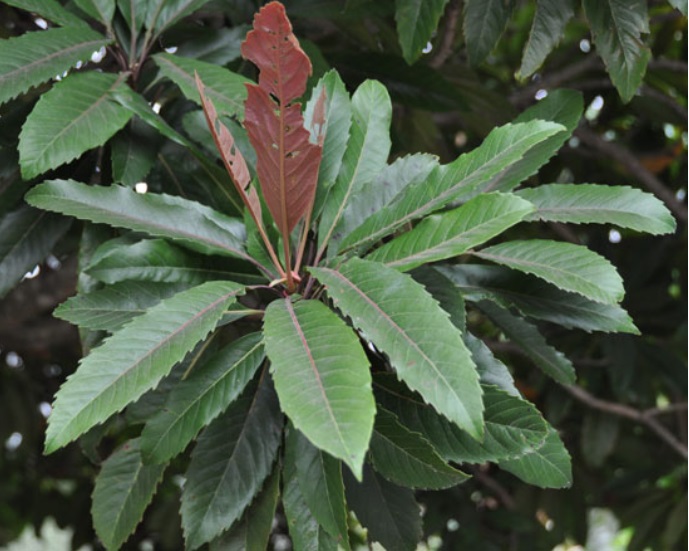 Figure 1. Leaves of Bronze Loquat
Figure 1. Leaves of Bronze Loquat
Twigs & Bark: The bark is thin and can easily be damaged because it is very fragile. The twigs are green and thick. [1]
Flowers & Fruits: The tree grows white flowers (Figure 2) with small fleshy green fruit (Figure 3). The fruit is known for attracting birds and squirrels in an inconspicuous manner [1]. Figure 2. Flowers of Bronze Loquat
Figure 2. Flowers of Bronze Loquat
 Figure 3. Bronze Loquat fruit
Figure 3. Bronze Loquat fruit
Where it’s from
Native range: Native to Central Eastern China, introduced over 1000 years ago. This plant is now grown for commercial regions all over the world. These trees are often planted in zen gardens to provide a relaxing atmosphere for people to enjoy the shade of the Bronze Loquat’s canopy [2]. For a map of the region where the tree is grown within the United States (Figure 4). Figure 5 depicts a native region map of the Bronze Loquat. This tree typically grows partly in sunlight and partly in the shade and requires a clay-like soil [1].
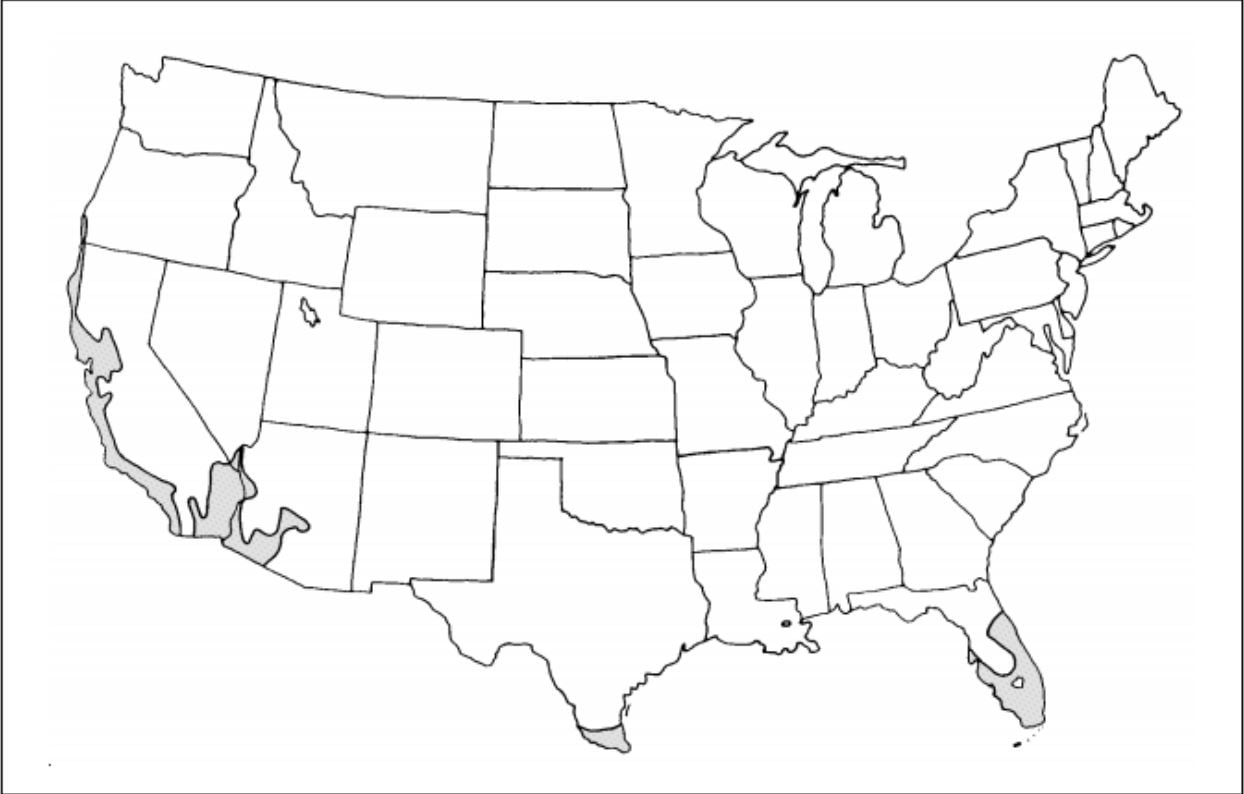 Figure 4. Map of Bronze Loquat distribution (lightly shaded regions) within the United States.
Figure 4. Map of Bronze Loquat distribution (lightly shaded regions) within the United States.
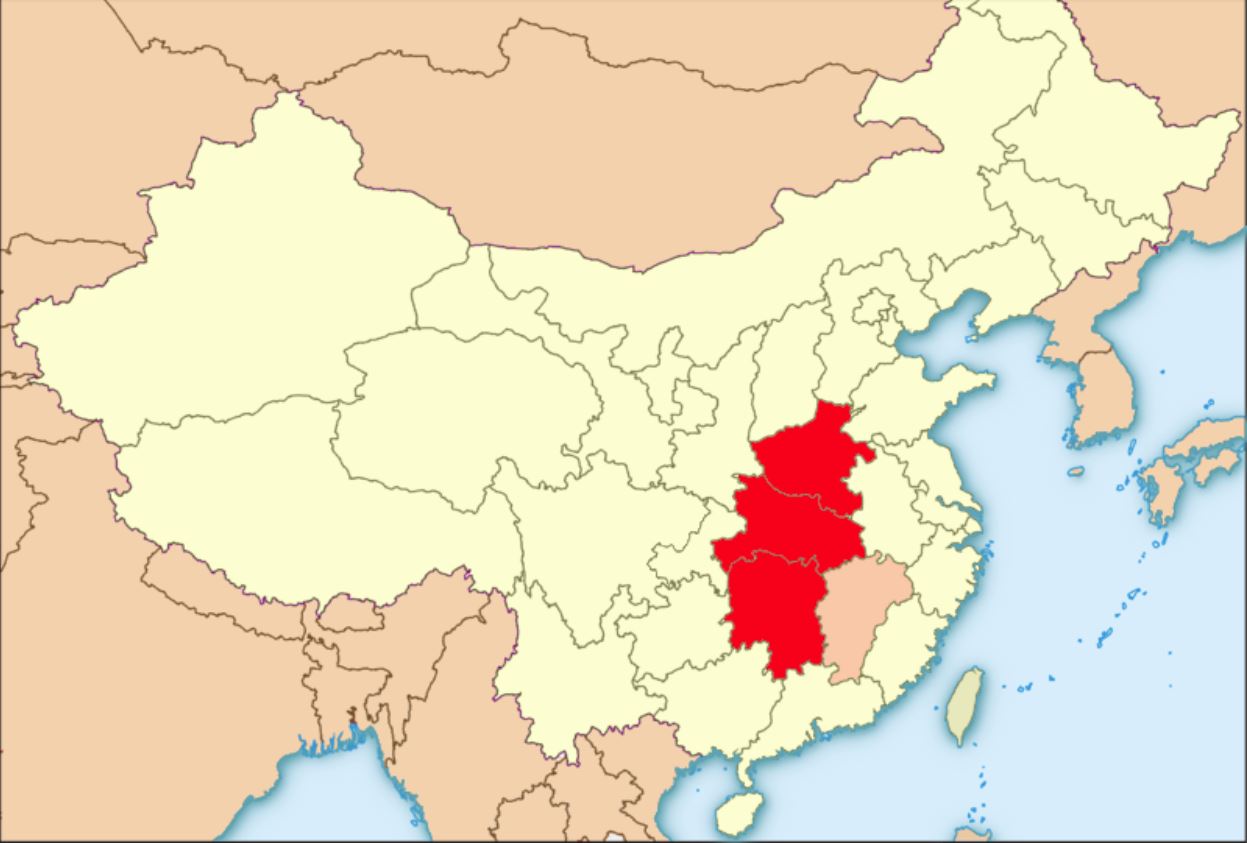 Figure 5. Native range map of Bronze Loquat
Figure 5. Native range map of Bronze Loquat
Ecological notes: Loquat trees, like the Bronze Loquat, are pollinated by attracting animals like bees and other insects to their flowers. While loquat trees are capable of self-pollination, cross-pollination improves fruit size and seed count [4]. Seed dispersal is accomplished by animals, primarily birds, which consume the fruit and spread the seeds in their waste [5].
Bronze loquat trees can be susceptible to destructive pests like spider mites or fire blight infections. Fire blight is a bacterial infection that initially strikes new growth regions, like leaves and flowers. Its presence can be identified by the cankers, which may leak into the twigs and branches to form streaks. These cankers are pictured on a twig in figure 6. As it spreads, fire blight can cause blackened leaves and can eventually dry out and discolor the wood. Fire blight can be managed by removing diseased limbs during summer and winter months when the bacteria are no longer active and spreading. If the trunk or other major segments of the tree are affected, the bark can be scraped down to the inner layers and allowed to regenerate [6]. Spider mites are small arachnids that form colonies on the underside of leaves. They construct communal webs along infected leaves and twigs which helps distinguish them from other small pests. In large populations, these mites can cause severe damage to leaves, as demonstrated in figure 7. Spider mites do have many natural insect predators, so avoiding insecticide use can help reduce mite populations. Well irrigated trees are also better equipped to fight off mite infestations and keeping trees free of dust will help deter the mites from settling [7].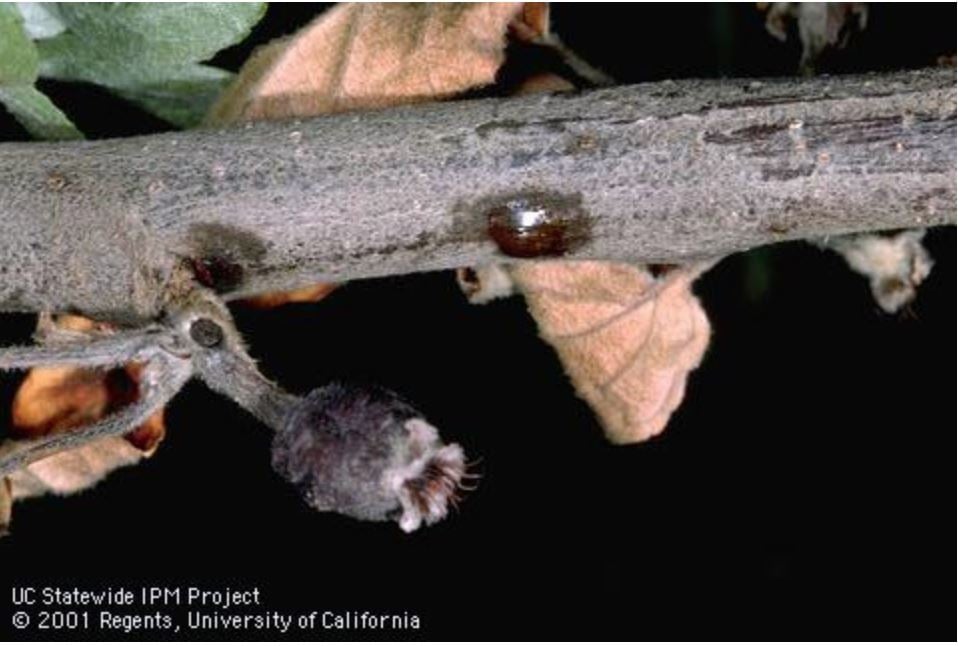 Figure 6. Fire Blight infection on a twig
Figure 6. Fire Blight infection on a twig 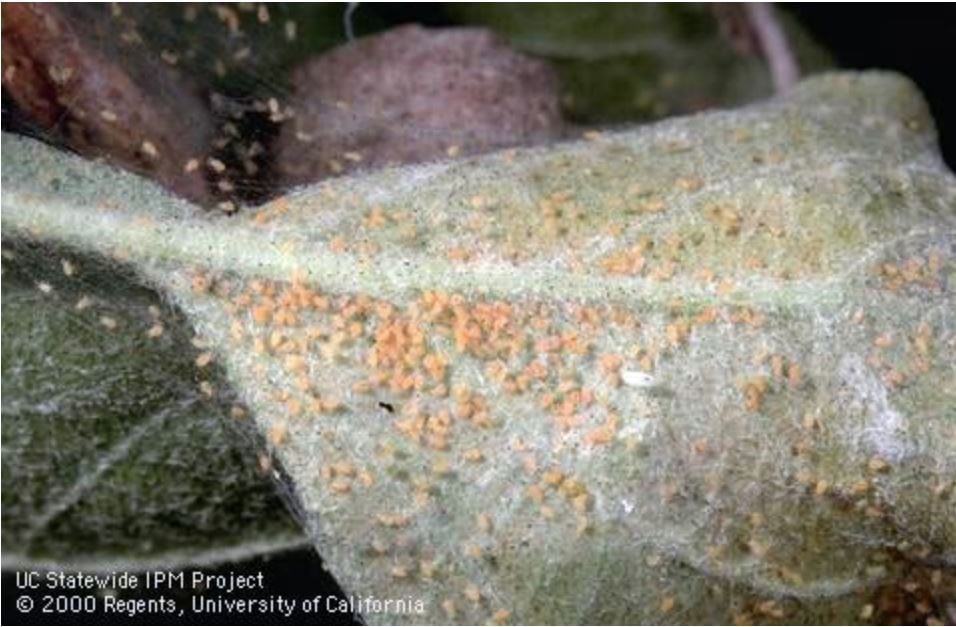 Figure 7. Spider mite colony
Figure 7. Spider mite colony
What we use it for
Most sources suggest that the bronze loquat is perfect for creating a shady area over a patio [2]. It is not advised to plant near roads or streets as the fruit weighs down the branches. This tree requires maintenance to avoid droopy branches [1]. To buy this tree a purchaser must be willing to spend at least $30 [4]. The tree is usually pest-free but can be susceptible to fireblight issues [7].
References
Image References
Biographers:
Keren Lee & Devon Tice '19, Biol 238 Evolution, Ecology, & Behavior, Spring 2019